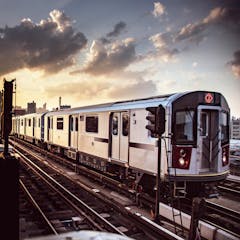
Articles on Trains
Displaying 1 - 20 of 66 articles

Britain’s railways are a vital pillar of the economy, so inefficiencies in the network hit the country in the pocket.

Love it or hate it, the ‘Acela Corridor’ has developed a widely recognized identity thanks to the trains that link it together.

The Shinkansen bullet train is symbolic of Japan’s position as a railway superpower.

Focusing solely on humans at the expense of other life in the aftermath of train derailments limits the effectiveness of our disaster response management.

Lac-Mégantic haunts rail transportation in North America. Here’s a look at how little has changed when it comes to rail safety since the disaster in rural Québec10 years ago.

Some 34 countries have high-speed rail or are about to get it. Yet since it was for proposed for Australia in 1984, no local plan for high-speed rail has got further than the drawing board.

A deadly crash in India that claimed the lives of around 300 people has refocused international attention on the importance of railways in the country.

The recent rail accident in Ohio is raising questions about who should be responsible for the aftermath of derailments. Residents impacted by a 10-year-old rail tragedy in Canada still want answers.

Transportation Secretary Pete Buttigieg is looking into new rules for trains. Trucks, however, are involved in thousands more hazmat incidents every year in the US.

As part of its target to cut emissions, New Zealand aims for a 20% reduction in driving by 2035, mainly through better urban planning and travel options. Why doesn’t the plan mention intercity rail?

The Victorian government has announced it is replacing the state’s public transport ticketing system. So what essential features should a state-of-the-art system offer users?

New research reveals that the London Underground is polluted with small particles which may carry negative health effects for humans.

Public buses, subways and trains are relatively safe, fast and cheap. But competition from rideshares and concerns over COVID-19 will soon see some local agencies short of funds.

The federal government must implement a railway policing law that helps restore public confidence in law enforcement and provides justice to the families of those who die on the job.

Industries have blocked or delayed new regulations and pushed to remove or dilute existing regulations by framing regulations as detrimental to creating jobs and wealth.

Despite the halt to the federal mask mandate for mass transit, people may still choose to protect themselves. For those who do, the type of mask and how well it fits matter.

Most people continue using their car because it’s convenient, but few consider the full cost of depreciation and maintenance. Carbon dioxide emissions rarely factor in people’s choice of transport.

Until train use recovers, a new approach to rail funding is needed.

The new service’s ultra cheap deals are a step towards what the public was promised when UK trains were privatised in the 1990s.

Regional NSW, home to a third of the state’s population, is still waiting for the promise of faster train travel to be delivered. Other states improved their regional services years ago.
